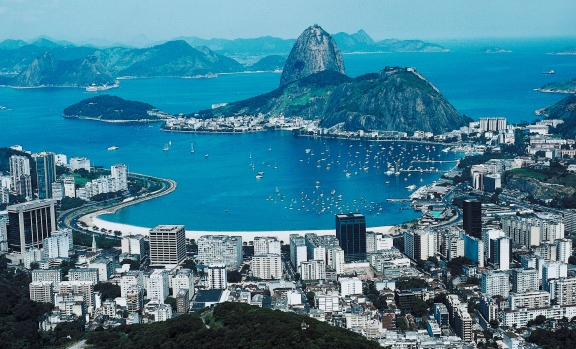Firm's analysts say big four have peaked, but others not ready to cave
Brazil is booming. This week, the host country for the next FIFA World Cup and the 2016 Summer Olympics officially leapfrogged Britain to become the sixth-largest, while its November unemployment rate of 5.2% is the lowest in its history.
But despite the milestones, investors in emerging markets funds haven't had much to cheer about this year. The average diversified emerging-markets mutual fund is down almost 20% year-to-date. Concerns over inflation, a slowdown in China and how far the turbulence in Europe can spread have knocked emerging markets for a loop this year.
Goldman Sachs Group Inc. is now forecasting that growth in the so-called BRIC nations — Brazil, Russia, India and China — has probably peaked, thanks to slower growth in the working-age population of those countries, according to a report from Bloomberg. The BRICs make up 45% of the MSCI Emerging Markets Index, the most popular emerging-markets benchmark.
The head winds and poor performance haven't been enough to keep investors away though. Emerging-markets funds have been the most popular equity fund category this year, attracting more than $19 billion of new money through the end of November, according to Morningstar Inc.
“We're not downgrading them because of poor performance,” said Mitchell Reiner, chief investment officer at Capital Investment Advisors Inc. “We're looking for opportunities to go in when we feel most comfortable,” he said.
Emerging-markets equities are trading at a discount to U.S. equities. The MSCI Emerging Index has a forward price-to-earnings ratio of 10.14, while the S&P 500 is trading at about 13 times forward earnings.
The long-term potential of emerging markets to outperform developed ones, thanks to the general stagnation of developed economies, is keeping emerging markets in portfolios for Susan Honig, founder of Veritana Financial Planning Inc. “Moving with every rise and fall of the market is not our policy at all,” she said. “Emerging markets have their potential and purpose in a portfolio.”
Diversified emerging-markets funds aren't the only way for advisers to gain direct exposure, noted Bill Rocco, senior fund analyst at Morningstar. Most international large-cap funds have at least some exposure to emerging markets, he said. Some international funds, such as the $8.8 billion Janus Overseas Fund, have considerable exposure. Janus Overseas had about 37% of its assets in emerging markets as of its latest quarterly filing.







